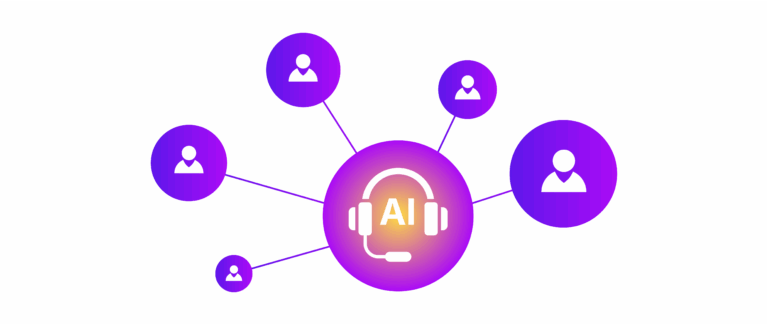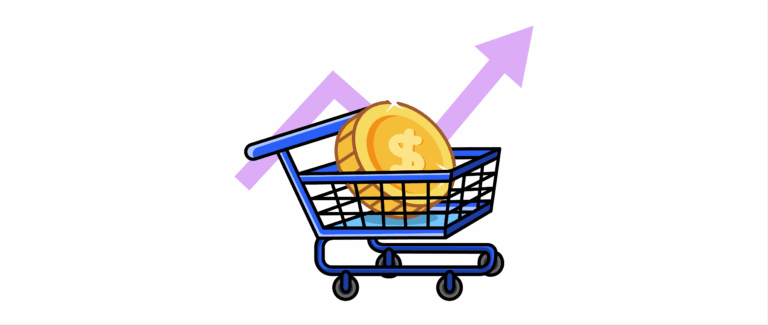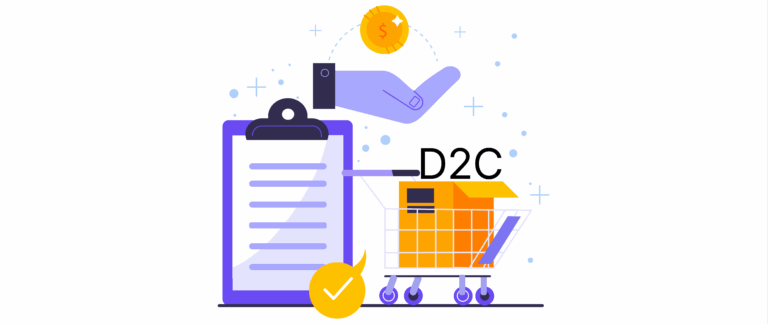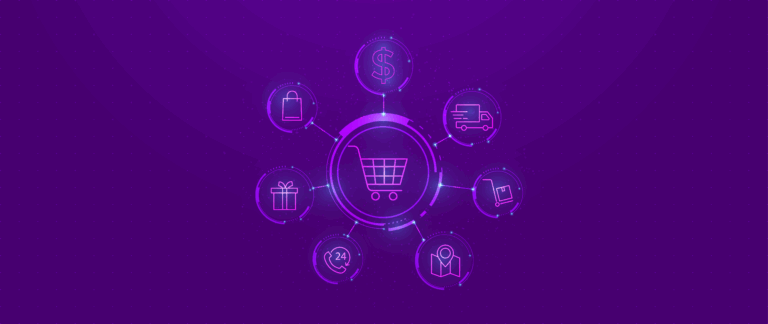Here’s a number that should keep every D2C founder awake at night: 70%.
That’s how many shoppers add items to their cart and then… vanish. Gone. Without a trace.
We’re not talking about window shoppers here. These are people who were this close to handing you their money. They found your product. They wanted it enough to click “Add to Cart.” Some even started entering their payment details.
But the transaction was never completed and then they left.
The global cost of leaving ‘just like that’ is a staggering $4.6 trillion in abandoned merchandise annually. For context, that’s an amount almost around Germany’s entire GDP.
What most D2C brands get wrong is that they treat cart abandonment like a technical problem.
“Our checkout flow needs fewer steps.”
“The shipping cost appears too late.”
“We need more trust badges.”
Wrong. Wrong. And wrong again.
More than just technical, cart abandonment is a psychological problem.
The brands that understand this difference build empires.
And the ones that don’t? They’re funding their competitors’ growth.
To address the challenge effectively, let us first take a closer look at what the D2C cart abandonment crisis actually is and why it’s such a pressing issue for brands today.
What is D2C cart abandonment crisis?
Let’s get uncomfortable for a moment.
If you’re running a D2C brand and your cart abandonment rate is below 65%, congratulations. You’re doing better than most. But “better than most” won’t build the business you dreamed of.
Cart abandonment continues to be a major challenge for online retailers and the numbers clearly show the scale of the problem.
- Fashion & Apparel: 77% abandonment rate
- Beauty & Personal Care: 83% abandonment rate
- Home & Furniture: 79% abandonment rate
Mobile makes it worse. Mobile cart abandonment sits at a crushing 85%.
Now, let’s do the math that might terrify you: A typical D2C brand with $1M annual revenue loses $2.3M to cart abandonment. That’s the revenue they had but failed to convert at the final, most critical moment.
And the long-term damage? You’re shrinking the value that customer could have brought over time.
When someone abandons their cart, it’s not just a single sale loss. Often, they don’t come back because the moment of intent has passed. That missed checkout can lead to a missed connection, turning one lost purchase into a lost customer.
Here, you’re losing revenue and the chance to build long-term relationships.
What is the psychology behind purchase hesitation?
Here’s where it gets interesting.
Old-school e-commerce strategies often treat customers as if they’re purely transactional, rather than human.
“Optimize your funnel”
“Reduce friction”
“A/B test your buttons”
But customers aren’t robots.
They’re complex psychological beings driven by emotions, biases, and subconscious fears. And if you don’t connect with that human side, even the most optimized funnel will flounder.
So, let’s explore the psychological triggers, or the reasons, behind why people abandon their carts.
a. Loss aversion
Nobel Prize winner Daniel Kahneman proved something marketers are still not getting right. People feel the pain of losing something twice as intensely as the pleasure of gaining it.
When customers hesitate to buy a product, it’s often because they’re unsure, not unwilling. Given the choice between buying and risking regret, many will choose to walk away.
What if it doesn’t fit? What if the quality disappoints? What if they find it cheaper tomorrow? What if their spouse thinks it’s stupid?
Each product left in a cart can represent a moment of hesitation, or even potential regret. And for many customers, that feeling carries weight. In these moments, the answer isn’t pushing harder or adding more persuasion.
It’s about reducing uncertainty and easing the fear behind the indecision.
b. Choice overload
Barry Schwartz, an American psychologist, called it “The Paradox of Choice.” Give people too many options, and they’ll choose nothing.
Your customers are drowning in decisions:
- Which size?
- Which color?
- Which shipping option?
- Which payment method?
- Do I need the extended warranty?
- Should I buy the bundle?
Every decision a customer has to make adds mental effort. And the more effort it takes, the more likely they are to give up before completing their purchase.
Amazon understood this early on. That’s why they introduced one-click buying, it was not just to make things faster, but to remove as many decisions as possible. Less thinking, more buying.
c. Temporal discounting
Psychologists have a term for human inability to value future rewards appropriately: temporal discounting.
Translation: “I’ll buy it tomorrow” usually means “I’ll never buy it.”
The moment your customer leaves your site, their desire for your product begins decaying. Here’s how it connects:
- When shoppers add items to their cart but don’t buy right away, the value of completing the purchase decreases over time in their minds.
- Their immediate motivation weakens as other distractions, doubts, or competing priorities take over.
- The reward of owning the product feels less urgent or appealing, so they push the decision to “later”, which often turns into never.
- This is why delays in follow-up (like abandoned cart emails or calls) reduce effectiveness. By this time, the customer’s interest and sense of urgency has already diminished.
So, temporal discounting explains the psychological “why” behind cart abandonment and highlights the importance of quick, timely reminders to recapture that motivation before it fades.
d. Buyer’s remorse
Your customers are time travelers.
They’re living in next week or maybe, month, while standing in your checkout today.
Dr. Daniel Gilbert, Harvard psychologist and author of “Stumbling on Happiness,” calls this “prospective memory” – our brain’s obsession with imagining future scenarios. And let me tell you, those imagined scenarios are rarely pretty.
Marketing legend David Ogilvy understood this decades ago. He said customers don’t buy products. They buy the absence of negative consequences.
This pre-purchase anxiety is cart abandonment’s secret weapon.
Think about the last time you almost bought something expensive online. Remember that pit in your stomach? The “what if this is a mistake?” feeling? That’s your customer right now.
Sure, guarantees help. Free returns work. But here’s what works better: a human voice that walks them through why this purchase makes sense for their specific situation.
Because when someone explains why you won’t regret this decision, suddenly the future doesn’t look so scary.
It looks… exciting again.
e. Trust barriers
Charles Green, co-author of The Trusted Advisor, outlined four components of trust: credibility, reliability, intimacy, and low self-orientation. These apply just as much to digital experiences as they do to human relationships.
Now consider your checkout experience. In less than 30 seconds, it’s quietly being evaluated on all four dimensions.
- A redirect to an unfamiliar third-party payment provider
- A slow-loading page that creates uncertainty
- A URL that doesn’t match your brand
- Asking for too much information, too soon
Each of these triggers a subtle red flag. And in that moment, trust starts to erode.
The takeaway here is that brands that build confidence at every step create frictionless experiences that convert more and retain longer. Because when customers feel secure, they complete purchases. And when they don’t… they disappear.
f. Absence of urgency
Scarcity drives action like nothing else.
But here’s the problem: your website is a procrastinator’s dream.
No countdown timers. No “Only 3 left” warnings. No reason to buy today instead of… someday.
Your customers are thinking, “I’ll just come back later.” And you know what? They’re right, because there’s nothing stopping them.
When people have unlimited time to decide, they often don’t decide at all. It’s called decision paralysis.
It goes like this:
“I can buy this anytime” → “Maybe I don’t need it” → Closed tab.
Meanwhile, your competitors are subtly creating urgency with flash sales, limited drops, cart timers.
Manipulative? Maybe.
But, profitable? Definitely.
And the truth is, your customers are busy. Kids yelling. Bosses pinging. Netflix waiting.
Without a reason to act now, “later” becomes the default.
And “later” almost always turns into never.
The solution isn’t to pressure people. It’s to help them decide.
Sometimes, the best thing you can give an overwhelmed customer… is a deadline.
g. Decision fatigue
Steve Jobs wore the same black turtleneck every day. Barack Obama limited his wardrobe to blue or grey suits.
What most people see as making a fashion statement was actually a way for them to manage decision fatigue.
Every choice we make throughout the day uses up mental energy. By the time a customer reaches your checkout page, they’ve already made dozens of small decisions, including what to buy, which color, which size, how much to spend.
At that point, even small obstacles, be it an extra form field, an unexpected fee, a complicated layout, can be enough to make them stop.
The best checkout experiences aren’t just fast. They keep things simple and avoid asking too much of your customer’s attention.
Fewer steps. Fewer choices. Fewer chances to back out.
Now that you have understood the psychology, let us explore what you can do to win your customers back.
How to use customer psychology to convert cart drop offs into higher conversions
Most attempts to recover abandoned carts aren’t very effective.
You’re doing all the right things, but it’s not working.
“You forgot something in your cart!” “Complete your purchase now!” “Don’t miss out!”
Unfortunately, these ideas aren’t dealing with the human psychology. Not hitting where it should.
An ideal cart recovery approach understands why people abandon and addresses those specific psychological barriers.
1. The psychology of effective re-engagement
Timing is everything, but not how you think.
The first abandoned cart email should go out within 1 hour. Not because urgency creates action (though it can), but because the psychological connection is still strong.
The second email should go out 24 hours later. This catches procrastinators and people who were genuinely interrupted.
The third email should go out 3 days later. This is your last chance before psychological connection dies.
One of the most followed remedies is message personalization based on behavioral data. It is observed to transform recovery rates by a significant margin.
However, channel psychology is where it gets really interesting. It is the study of how people think and behave differently depending on the platform or channel they are connected through. This could be SMS, phone call, email, or even a website or mobile app.
For instance, e-mail feels promotional. SMS feels personal. Phone calls feel important.
Most cart abandoners get emails. Few get calls. Guess which channel gets attention?
2. Creating urgency without desperation
Scarcity psychology works, but only when it’s authentic.
“Only 2 left in stock” creates urgency.
“Sale ends at midnight” creates deadline pressure.
“Limited edition” creates exclusivity.
But fake scarcity backfires. Customers are very perceptive and can easily detect when a brand is trying too hard or appearing desperate.
On the other hand, incorporating social proof into recovery campaigns provides valuable external validation that reassures customers about their purchase decisions.
“127 people bought this item yesterday”
“Sarah M. from Austin just purchased this”
“Trending in your area”
It shows potential buyers that others are interested and actively buying the product. This changes the purchase from being a purely individual choice to one influenced by social behavior, which can be incredibly persuasive.
Other than social proof, gamification elements can transform the entire buying experience from a routine transaction into something engaging and rewarding.
For instance:
“You’re 1 step away from free shipping”
“VIP member benefits activated”
“Earn 500 points with this purchase”
Together, these techniques not only drive urgency and trust but also create a more enjoyable and motivating shopping experience that keeps customers coming back.
3. The human touch in cart recovery
This might be an uncomfortable truth, but your customers don’t trust your brand yet.
They trust people.
When it comes to recovery efforts, the more personal and human the channel, the more effective it tends to be.
- Emails can help re-engage customers, but their impact is often limited by lower open and conversion rates.
- SMS messages feel more immediate and personal, typically leading to higher engagement and better results.
- Phone calls, being the most direct and human form of communication, often achieve the highest connection and conversion rates.
The pattern is clear! Adding a human touch to your recovery strategy makes all the difference in building trust and driving conversions.
But here’s the problem: phone calls don’t scale.
Or do they?
Recent advances in technology have introduced AI-powered calling agents as a new option for customer recovery. These agents use conversational techniques that mimic real human interactions while allowing businesses to handle many calls at once.
Imagine every abandoned cart customer getting a personalized phone call within 30 minutes:
“Hi Jennifer, this is Rhea from BeautyLimited. I noticed you were looking at our skincare set but didn’t complete your order. I wanted to make sure you didn’t have any questions about the products or the ordering process.”
This is a simple, honest conversation, and not a sales script.
The AI agent can:
- Answer product questions in real-time
- Address specific concerns about ingredients, shipping, or returns
- Walk customers through the checkout process
- Offer personalized recommendations
- Handle objections naturally and conversationally
These capabilities matter not just because they automate tasks, but because they support the kind of interaction that makes voice such an effective channel for recovery.
Here’s a closer look at why voice can be more effective than text for recovery.
a. Building rapport through personalized conversations
The AI agent references the customer’s browsing behavior, answers product-specific questions, and adapts to their communication style.
“I see you spent some time reading about our organic ingredients. That’s great! Clean beauty is so important. Do you have sensitive skin? I can recommend which products in your cart would be most gentle…”
This isn’t possible with email or SMS.
b. Overcoming objections in real-time
Customer: “I’m not sure about the size”
AI Agent: “I completely understand. Based on the measurements you’re looking for, I’d actually recommend going up one size. We have a perfect fit guarantee, so if it doesn’t work out, returns are completely free. Would you like me to update that in your cart?”
In situations like these, real-time dialogue allows the AI to address hesitation the moment it appears, something email or SMS simply can’t do. This immediate resolution often makes the difference between a lost cart and a completed purchase.
c. Trust-building through voice interaction
There’s something inherently trustworthy about the human voice. It conveys tone, intent, and warmth in ways that text often can’t.
The AI agent doesn’t sound robotic because it is designed to speak naturally, like a knowledgeable, helpful person having a real conversation. That vocal familiarity can create a more comfortable, engaging experience for the customer, helping to build trust in a way that text-based channels struggle to match.
This is a big psychological advantage that can do wonders for cart recovery.
Closing the loop
Cart abandonment isn’t a new challenge and it’s not going away anytime soon.
In fact, it’s becoming more common. With endless options, constant distractions, and shrinking attention spans, it’s easier than ever for shoppers to leave without completing a purchase.
But for thoughtful D2C brands, this doesn’t have to be bad news. It’s a chance to do things differently.
While many businesses focus on the small percentage of customers who convert without friction, there’s a much larger segment being overlooked. And these are the shoppers who showed interest but didn’t follow through.
With the right approach, cart abandonment can be a meaningful opportunity for growth.
The tools are available. The behavioral patterns are well understood. And the potential impact is significant.
The next step is simply deciding how and when you want to act on it.





